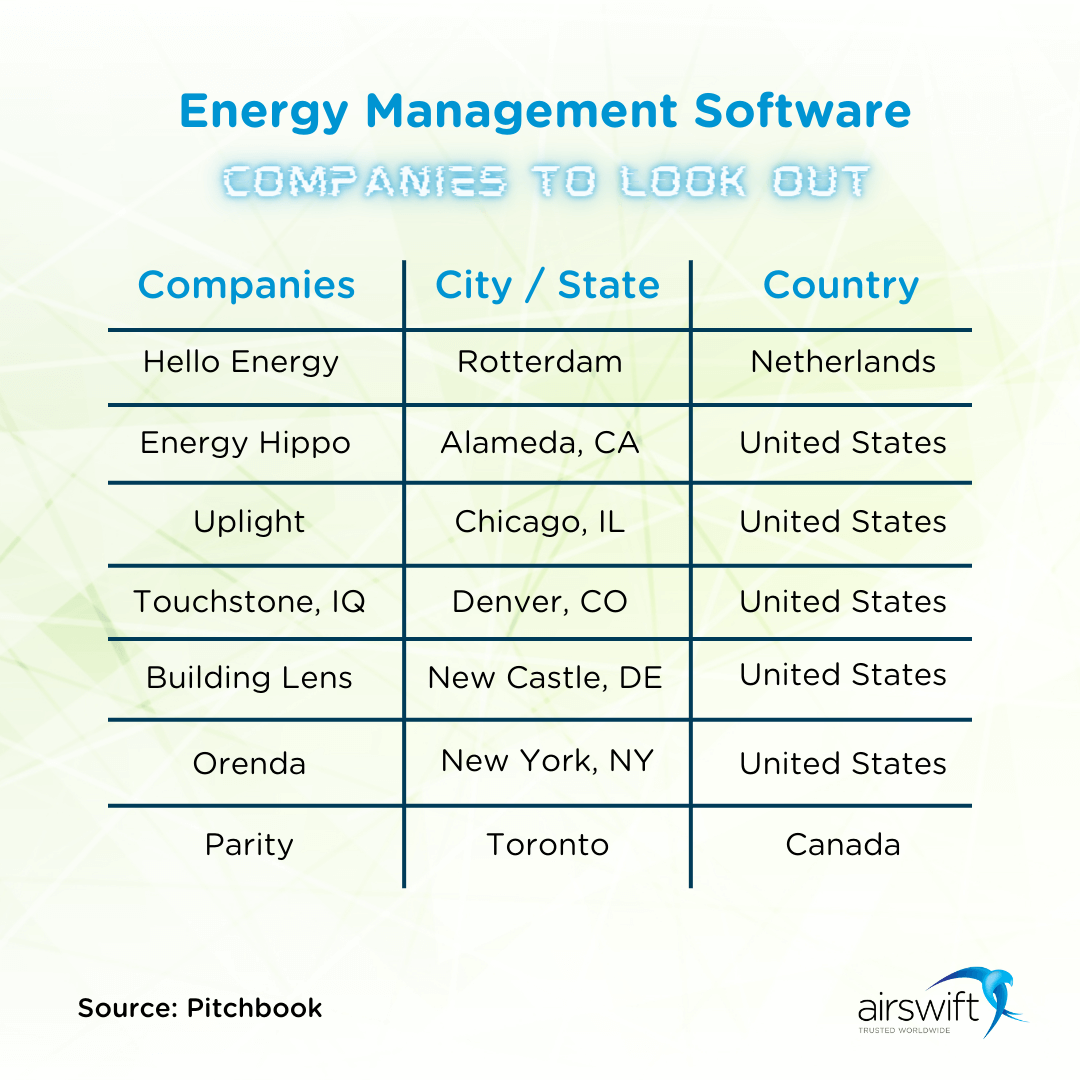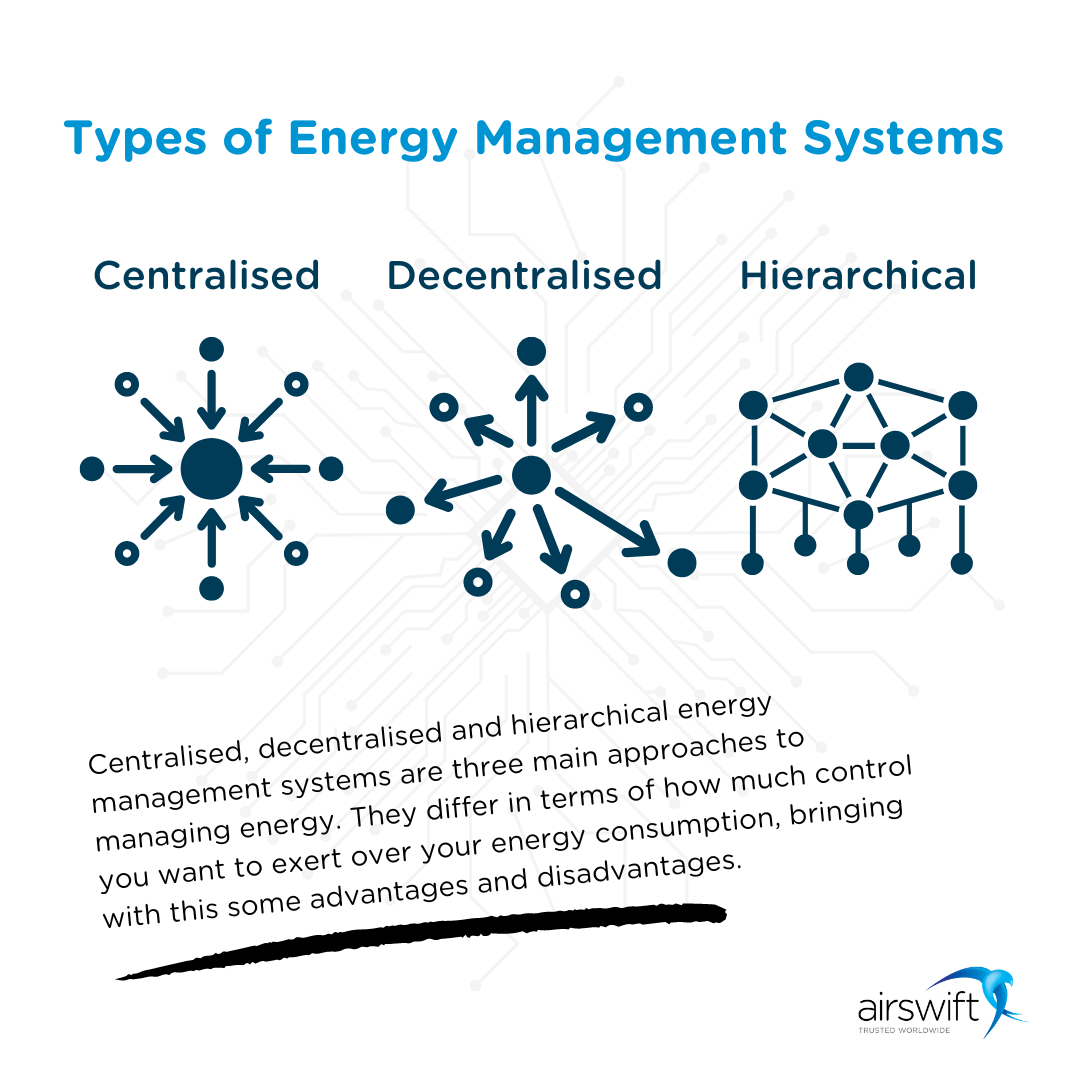
By
Raphael Santos
November 3, 2022
Updated
January 28, 2025
Artificial intelligence-based EMS are today's digital tools in energy saving
The first step towards a more efficient energy system is to understand how much energy we consume and where it comes from. This requires an overview of all the activities that take place in our homes or offices.
The second step is to identify which of these activities can be automated so as to save energy. As a result, the industry is relying on the power of Energy Management Software (EMS).
Throughout the literature on the subject, the acronym EMS is often used interchangeably to describe both Energy Management Systems and Energy Management Software. For this article, we will use it to talk about Energy Management Software.
What is Energy Management Software?
Energy management software is a digital tool that allows you to monitor energy consumption and manage it by automating certain tasks. In addition, EMS also provides insights on how to improve efficiency and cut costs further. Informed decisions help you make better choices regarding the levels of your energy usage.
The main goal of these systems is to reduce costs by optimising consumption and production processes. But you're probably wondering how this works, aren't you? So, let's not waste more time!
How does Energy Management Software work?
Energy consumption data can be analysed using computer programs such as those based on artificial intelligence. These programs help us to find out which activities are consuming too much energy and which ones can be improved by changing their behaviour.
This is done by a framework encompassing three phases: reporting, monitoring and engagement.
Reporting
First, the user must report his/her energy consumption. The information collected will then be sent to the EMS.
Monitoring
Next, the EMS analyses the data received and identifies the most relevant actions to automate. For example, if there is no need to heat the environment during winter, the EMS platform might turn off heating devices automatically when temperatures drop below a certain threshold.
Engagement
Finally, the EMS sends recommendations to the users about how they can optimise their energy usage. It may suggest that they install new appliances or change their habits. The cloud-based nature of the software makes it possible to share these suggestions with other users.
 Source: Frame Stock Footage/Shutterstock
Source: Frame Stock Footage/Shutterstock
It’s also essential to note the importance of incorporating both state-of-art hardware (power meters, HVAC controllers) with the right software platform (energy manager) to deploy a well-designed Energy Management System for your business.
What are the benefits of an Energy Management System?
There are many reasons you should consider investing in a proper Energy Management System; the right software can also be a game changer for handling your energy usage efficiency. Here are some benefits to consider:
- Reduce carbon emissions
One example is the reduction of CO2 emissions through the optimisation of lighting. If you have several lights installed throughout your office, you can set them to switch on only when needed. This way, you'll avoid wasting electricity, thus reducing your carbon footprint.
- Improve comfort levels
To improve comfort levels, you can use smart thermostats to adjust temperature settings depending on the season. You can also save money by turning off air conditioning units when rooms are empty.
- Increase productivity
An Energy Management Software can help with the productivity of employees. By setting up automatic alerts, you can notify staff members when their equipment needs maintenance. This way, you won't have to worry about forgetting to schedule repairs.
- Optimise energy use
We have talked a lot about the optimisation provided by Energy Management Software, but to be more concise, let's make it clear that these systems give you real-time insight into everything related to managing electricity. They are, therefore, a vital component of any production line: they improve quality, increase productivity, and simplify operations.
- Improve security
Energy Data Management Systems allow you to monitor and control access to critical areas such as offices, warehouses, factories, etc. They can even be connected to alarm systems to ensure safety and security.
- Ensure compliance with regulations
EMS can ensure that you meet the requirements of various regulatory bodies. In addition, they can help you comply with local laws regarding energy consumption. For example, the laws governing the installation of solar panels require you to keep records of the amount of power generated by each panel. An Energy Management Software will help you do this efficiently.
An automated solution for managing electricity usage at any scale will enable companies to implement sustainable business practices. This will help your organisation to get "green" certifications and get closer towards fulfilling its ESG policies.
What is the purpose of ISO 50001?
The ISO 50001 certification is a standard designed to promote energy management in organisations. It defines best practice guidelines for measuring, reducing and reporting energy use.
It was developed by the International Organisation for Standardisation (ISO), a non-governmental international body that develops standards for products and services around the world.
The aim of ISO 50001 is to encourage businesses to adopt energy management solutions. In other words, it aims to make sure that all companies have access to tools that allow them to measure, reduce and report their energy use. Not to mention, the certification can help to cement the companies reputation as a credible operation.
So, to get such recognition, you must choose carefully which energy management software will play an important role in saving energy in your business.
Energy Management Software Companies to look out for
Sustainably reducing energy costs has become a core business endeavour of a lot of startups, and there are several notable companies trying to solve this problem by offering different kinds of products and services.
Here we list seven companies that are providing potential products that could positively affect the energy management systems industry.

Hello Energy, for example, offers a cloud-based energy management software that helps property managers save money while improving their comfort level, and lowering carbon emissions. In 2020, the startup raised USD$ 1 million from a deal led by Enfuro Ventures.
Parity is another company in the venture capitalists’ spotlight, having raised USD$8 million in a series B funding in 2022. The company uses machine learning algorithms to predict future energy needs and then optimises energy usage based on these predictions.
Energy management software startups like Hello Energy and Parity are helping to improve the efficiency of our homes and buildings. They are also making it easier for us to monitor and control our energy consumption.
Why is energy management necessary?
There are several reasons why energy management is so important. We've outlined in this article the benefits of having a structured energy management system, including the costs saved, increased efficiency and sustainability goals achieved. And when everything is powered by a trusted and robust software, things become much easier.
But, know this, the necessity of energy management is not only about saving money but also about protecting the environment. By using less energy, we are able to reduce our carbon footprint and help the planet.
In addition to that, energy management is essential because it allows us to track how much energy we consume and where it comes from. This way, we can find ways to cut down on greenhouse gas emissions.
Challenges to implementing an Energy Management System
Uncertainty is an inevitable part of any smart grid. There may be unexpected delays due to unpredictable human behaviour, erratic Plug-in Electric Vehicles (PEVs) driving patterns, weather conditions and intermittency in sources.
Also, ensuring the security and privacy of customer data needs to be a crucial part of your energy management strategy.
However, one of the biggest challenges with implementing a whole system powered by hardware and software for energy efficiency is the time required to set up and deploy it. The results may not be immediate.
That is why you will want a skilled workforce to help you keep up with the latest trends in technology. But not only do you need to look for the best, but also for the most precise. That is because every Energy Management Software has its nuances, and they can work as a centralised, a decentralised and a hierarchical system.

Centralised approach
A centralised Energy Management System is a single point of contact for all customers. It gathers information from multiple devices and sensors, and provides a unified interface for managing energy usage.
This type of system is usually implemented through a cloud-based platform. In other words, it’s a web application that runs on servers located somewhere else beyond the physical location of the device.
This means that the server is always connected to the Internet, making it possible to access it from anywhere.
Centralised systems are very useful if you have a large number of users who share the same account.
For example, if you run a hotel chain, you could use a centralised system to manage the energy usage of each room. You would then be able to see how many guests are staying at each room, and whether there are any unusual spikes in energy consumption.
You could even send alerts to the front desk if someone starts using more electricity than usual.
Decentralised approach
A decentralised Energy Management System is a distributed network of devices that communicates directly with each other. Each device acts like a node in the network having autonomous control capability, and communicating with other nodes via wireless communication protocols such as Zigbee, Wi-Fi, Bluetooth, etc.
In this case, the user doesn’t necessarily need to log into a central website to view their energy usage. Instead, they can simply connect their smartphone or tablet to the network and receive real-time updates about their energy usage.
This kind of Energy Management System works well when you have a small number of users who don't share the same account. For example, if you own a home where you live alone, you might install a decentralised EMS so that you can monitor your energy usage without having to log into a central site.
Hierarchical approach
The hierarchical approach is similar to the decentralised approach, but it adds an extra layer of security. This allows you to create different levels of access depending on the authority you give certain users.
For example, you could allow managers to view data about individual employees, while allowing supervisors to view data about entire departments. This way, you can ensure that sensitive information is protected.
Choosing the best approach to manage your energy
Every Energy Management System approach has its benefits and purpose for a specific business. But, we can use some enlightenment from the industry to help guide our thinking when working with the hypothetical pros and cons of each model.
 Source: Frame Stock Footage/Shutterstock
Source: Frame Stock Footage/Shutterstock
We can summarise these points by saying that centralised systems has global optimisations and therefore lower costs than decentralised systems. However, decentralised systems has lower computational burdens and lower response times than centralised systems.
The decentralised systems have better reliability, but they are not well-suited for macrogrids. And when selecting a hierarchical approach, you must be aware that the complexity of implementation of this type of system is high.
All these systems being put forward require you to get skilled people onto the team. However, there aren't enough skilled people available as we face a serious tech talent scarcity in today's market. To counter this problem, you need to consider partnering up with experienced professionals.
Find the best tech talent to improve your energy efficiency
You will need experts who can provide the best solutions for your business. If you don't have enough time or resources to do this yourself, you should consider work with an outsourcing partner.
And that's exactly why we are here. Airswift is a leading company in providing the best STEM professionals for your business. With us, you can have an efficient workforce who have the skills needed to manage a proper energy management system.
We have more than 60 offices worldwide and over 9,000 contractors. Our team can deliver the highest quality of service and is prepared to handle all kinds of projects and challenges. Learn more about our services and find the talent that combined with your business strategy, will put you ahead of the competition.

